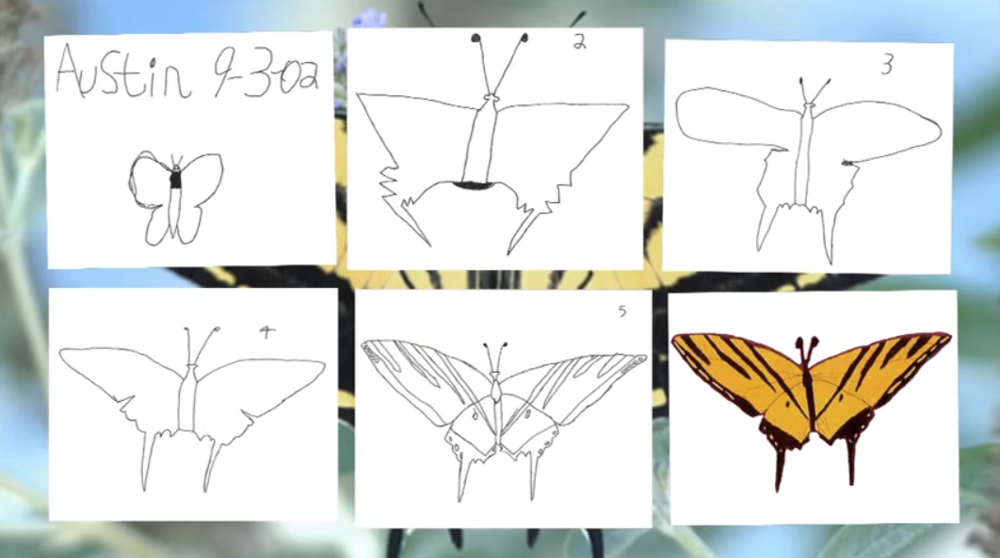“What have you done today to make you feel proud?” Heather Small’s rising vocals drift from the speakers across my living room.
As humans, we seem not to be allowed to be proud of anything. Pride comes before a fall doesn’t it? We can be proud in a sort of self-deprecating, humorous kind of way: “Yeah, I caught the last bus home and even managed to stay awake this time and get off at the right stop. I’m pretty proud of myself!” Of course, that’s not pride. What makes us proud of the work we do? I would suggest that it’s when one overcomes difficulties or works exceptionally hard on a project that matters. Apple is regarded as the most innovative company globally, which may be true. Still, I would counter and say that it is the most iterative company in the world, one that makes constant small improvements to its work to produce something that they can rightfully be proud of.
How can we, as educators, instil a feeling of pride in our students in their work? How do we help them see the flaws in their work and then get them to iterate?
Let me introduce you to Ron Berger, who taught for three decades at a small elementary school in Massachusetts. He believed in craftsmanship and effort in his classroom, and in his book An Ethic of Excellence, he describes the process that his students went through in the pursuit of excellence and ultimately genuine pride in their work. He calls this kind of work ‘beautiful work’.
Berger would say that firstly, as teachers, we have to ensure that students think that their work is essential and that it matters, firstly to them and then to us. One of the ways that we can help them to believe this is by giving them time to reflect on their work and make minor improvements. There is no point saying, ‘This is a really important piece of work’ and then allowing students a measly 50 minutes of lesson time to complete it. Teenagers are wiley. They’ll see right through you, and don’t think that 5-year-old Richard in reception class won’t see right through it too, he will!
So, time is necessary, but also so is the teaching material. It is crucial to give students a rich variety of learning materials and resources, helping them to engender a curiosity for their work. Showbie allows teachers to create rich learning experiences for their students as it enables them to upload a variety of files, links, images and recordings to really enable a student to dig deep into a subject. Furthermore, the ability to deliver materials to different students via the sharing options means that teachers can support those who are struggling whilst also enriching the resources for those who are flying.
 Source: Austin’s Butterfly: Building Excellence in Student Work – Ron Berger
Source: Austin’s Butterfly: Building Excellence in Student Work – Ron Berger
Simply providing time and varied resources is not enough though and in order to develop craftsmanship, students need time to reflect on their learning. I would go as far as to say that this is one of the most important elements of learning. But critiquing one’s own work can be exceptionally difficult and frustrating. In this video called “Austin’s Butterfly: Building Excellence in Student Work”, Ron Berger expertly guides a class of very young students through a process of critiquing a fellow student’s artwork through multiple drafts toward a high-quality final product. You can see that it is done with care and compassion and each time the pride in his work must be growing and growing within Austin.
How can Showbie help students to deliver critique to their peers?
Using the class discussion feature is a great way to demonstrate critical thinking. Teachers can place a copy of a student’s work in the class discussion and open the discussion to enable others to provide constructive feedback on the work. All discussions in the class discussion feature are teacher monitored which means that feedback is of high quality. The use of voice notes here means that precise feedback can be delivered quickly and effectively. What’s more, it can be a great homework task which enables in-class time to be used efficiently and productively, whilst still giving the feeling of having plenty of time to complete a project.
It’s also easy to see the iterative process at work within Showbie as students add new versions of their work to the assignment. Careful naming of each document and the use of the large preview settings allows teachers to be able to see at a glance the reflection and feedback loop taking place. You could also use the groups feature within Showbie to put your class into small groups, each student adding their work and the group then critiquing that work again, this could be a homework assignment.
Feedback, iteration and the hard work is done; Now it’s time to hit that gold star and be proud.
Ron Berger’s students always shared their work in an exhibition at the end of the year with their families and other community members. Showbie’s exhibition hall is the portfolio feature (signified by a gold star) which allows students and teachers to highlight exceptional work. The great thing about the portfolio is that it is shared with parents too. This is the final piece in the jigsaw puzzle of pride – an audience. As Rushton Hurley states “If students are sharing their work with you (the teacher) they want it to be good enough. If they are sharing it with the world they want it to be great!”
Good enough is ok but at Showbie we’d like all of your students’ work to be exceptional, which is why we build tools to help that happen in your classroom.
Read more about effective feedback, right here.



